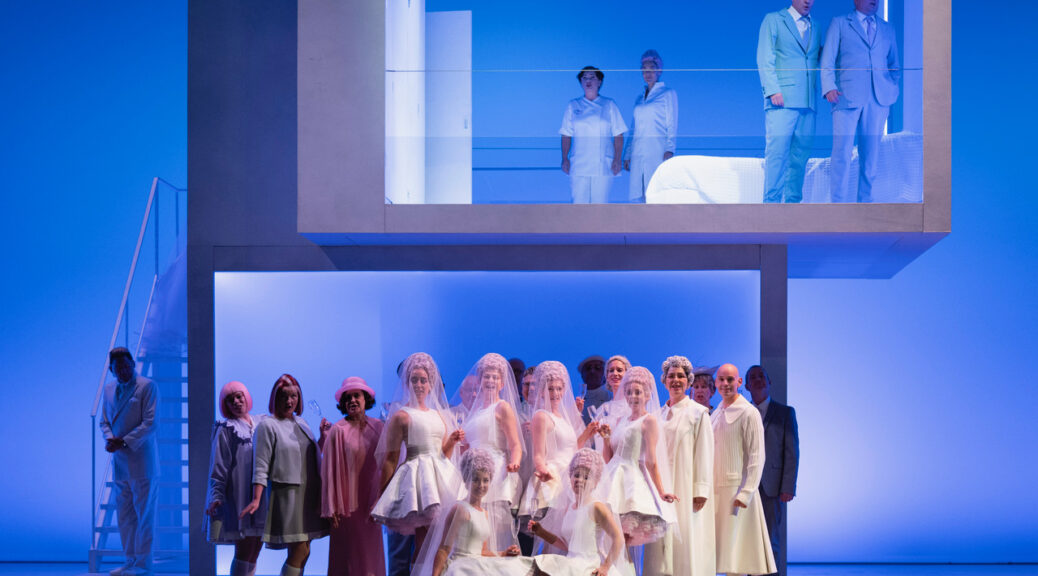
 (4 / 5)
(4 / 5)
It’s incredible to think that there has been just one WNO production of Madam Butterfly for around 40 years. Revived many times, of course, but still remarkable. So it’s difficult to put to one side the Japanese post-colonial setting with which so many of us are so familiar.
But lay it aside we must, and approach this new production, directed by Lindy Hume, with an open mind.
It’s worth it. We are catapulted into the future – quite when is not important – and the effect is startling. Unencumbered by place and time, our attention is focused on other aspects of stage management – set, lighting – and of course the music. Costume by Isabella Bywater, is stark, and yet subtle. White is the predominant theme here, but from which era? We see late50s/early60s-inspired dresses; boots straight out of the 70s; nods to early 80s New Romantics, all adding to our sense of dislocation of time and place.
Set and lighting take centre stage here. The Pinkertons’ Americanised home could be found anywhere, a stripped, blank cubic canvas in and around which the action centres. Framed in a harsh neon square of light, Butterfly and Suzuki in particular appear trapped by confinement. Contrast this with the soft and skilful use of colour washes by Lighting Designer Elanor Higgins, on the outer walls of the stage. Rose petals, the sea and the sky, dusk, daybreak are all beautifully captured through the medium of lighting alone.
Alexia Voulgaridou manages to capture both the tender love and the horror felt by Cio Cio San on learning her fate. Leonardo Caimi’s tenor is fabulous in demonstrating his sense of entitlement and Western superiority, and both Goro and Suzuki (sung by Tom Randle and Kezia Bienek) fulfil the demands of their roles well. Other parts are sung by Keel Watson, Sion Goronwy, Neil Balfour and Sian Meinir. As ever, one of the highlights was the magnificent orchestra under the baton of James Southall, and the ever-reliable chorus. The scene accompanying the hauntingly beautiful Humming Chorus will stay will long endure.
A bold production which, via its dislocation of time and place, serves to demonstrate that this saga of power and entitlement is, arguably, as relevant to us today as it has ever been.

